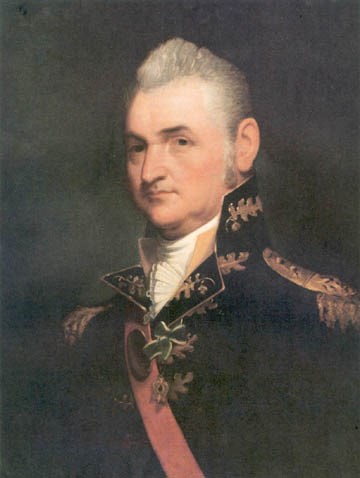Last updated: April 14, 2020
Article
Secretary of War Henry Dearborn

Dearborn supported and assisted in early plans for the Expedition and he ultimately was responsible for the men of the Corps, since they were members of the U.S. Army.
Born in 1751 in Hampton, New Hampshire, Dearborn was initially a doctor prior to the American Revolution. Upon hearing of the events at Lexington and Concord, he led his militia company to Cambridge, Massachusetts and joined the U.S. Army. He was present at some of the key moments of the Revolution, including the Battles at Bunker Hill and Saratoga, the Siege of Fort Ticonderoga, the winter encampment at Valley Forge, and the surrender of General Cornwallis at Yorktown. Discharged in 1783, Dearborn settled in Maine, but quickly returned to military duty in 1787 as a brigadier general and was promoted to major general two years later.
Due to his outstanding military record and popularity, he was elected to the House of Representatives for two terms from 1793 to 1797. Soon thereafter, he was appointed Secretary of War by President Jefferson. After the end of the Jefferson administration, Dearborn collected duties in the port of Boston, a position he held until the War of 1812 broke out and he was appointed senior major general of the U.S. Army. Unfortunately, his inability to reinforce Brigadier General William Hull in a battle near Detroit proved fatal to his military career and he was recalled from the field in July 1813 -- he served the rest of his military service in an administrative role. He was honorably discharged in 1815, then briefly served as a foreign minister to Portugal before retiring to his home near Boston.
Henry Dearborn died on June 6, 1829 at Roxbury, Massachusetts.
Fort Dearborn, located in what is now the heart of downtown Chicago, was named for him. Meriwether Lewis named a 70-mile river in central Montana after Dearborn in July 1805.
